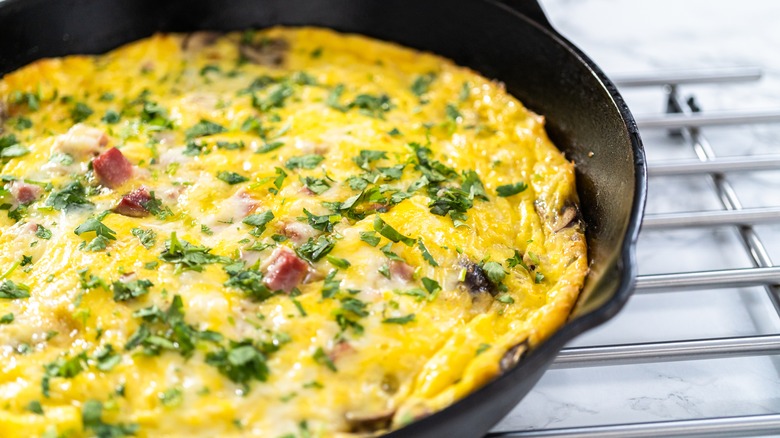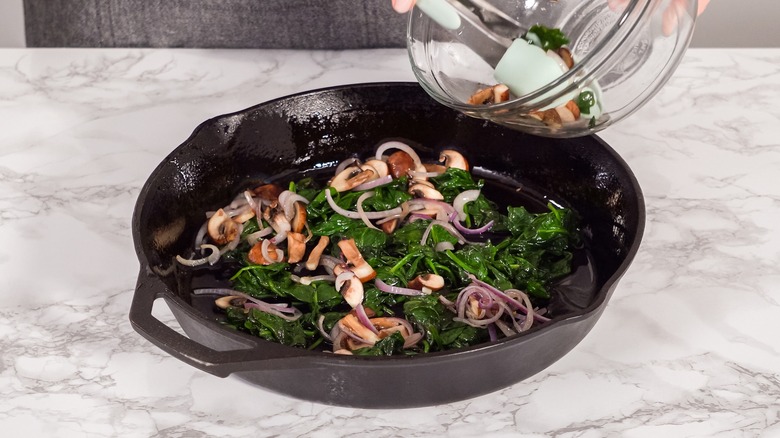The Real Reason Your Frittata Turned Out Soggy
If you have leftover roasted vegetables and are in the mood for a breakfast that's a bit heartier than a classic omelet, a frittata is the perfect solution. It resembles a quiche, but without the crust, and as Food52 explains, the cooking process is a lot simpler. In a frittata, there's no kneading or parbaking of the dough involved, no custard that needs whipping, and that means it comes together a bit quicker than a quiche.
But just because a frittata is a less time-consuming recipe than quiche doesn't mean it's entirely foolproof. If not made properly, a frittata could easily turn out soggy or partially uncooked on the inside. Contrary to what you might assume, this has nothing to do with the temperature of the oven or how long it bakes, but rather the state of the mix-ins. Italians originally created frittatas to make use of leftovers, National Post shares, and as it turns out, this actually plays a significant role in the dish's resulting texture.
Never use uncooked vegetables in a frittata
If your frittata turned out soggy, it's because you used uncooked mix-ins. According to Bon Appétit, many common frittata ingredients like tomatoes, mushrooms, and zucchini have a high moisture content, and that means they seep water when cooked. Therefore, if you add them to the mixture raw, you'll end up with a watery frittata with undercooked vegetables. That's precisely why leftover vegetables are traditionally used, so while you could use fresh vegetables, you'll need to sauté them beforehand.
If you want your vegetables to retain some crunch, you can just leave them al dente, My Recipes shares. As for herbs, there's no pre-cooking required. It's actually best to add them fresh or else they'll turn brown and lose flavor. However, when it comes to meat, you'll want to fully cook it because otherwise, it'll still be raw by the time the eggs finish cooking. Take the extra step, and your frittata will be better for it.

